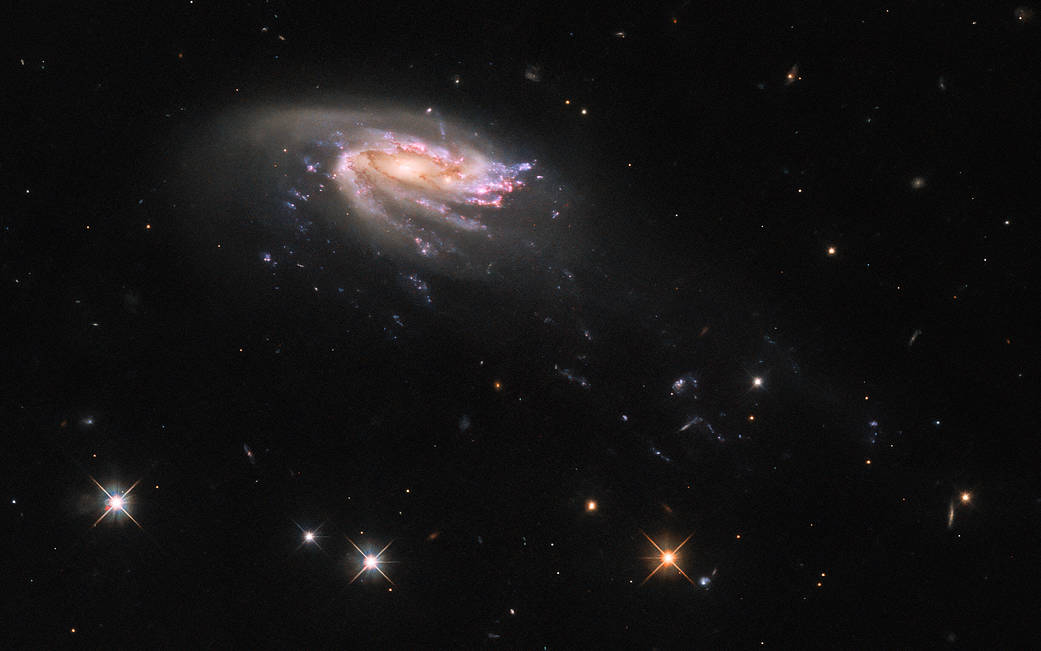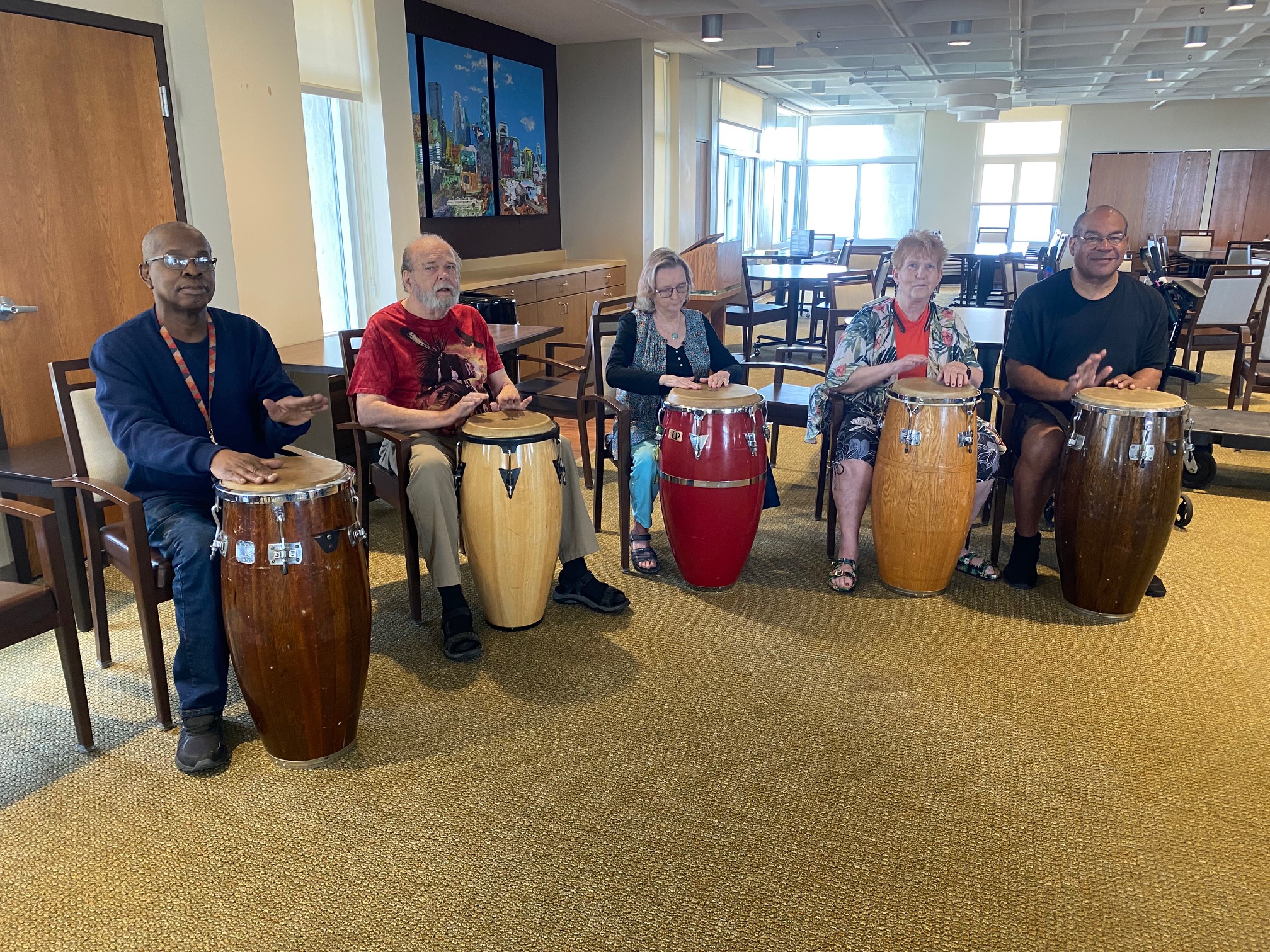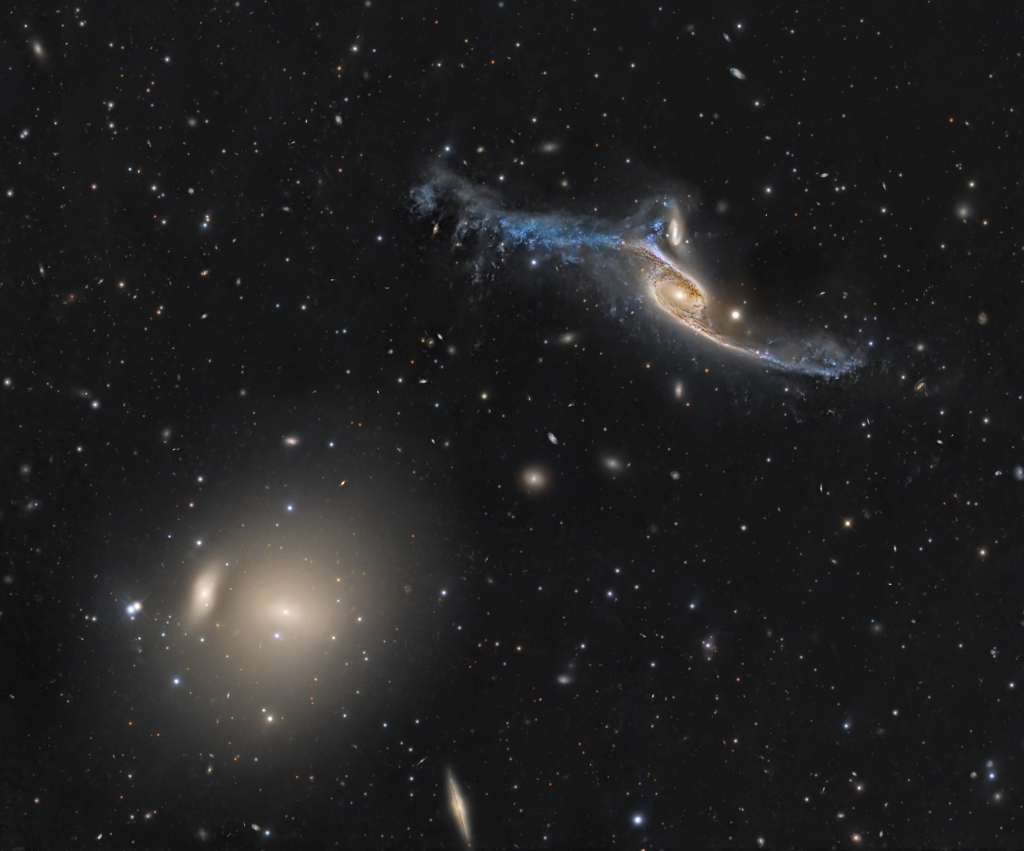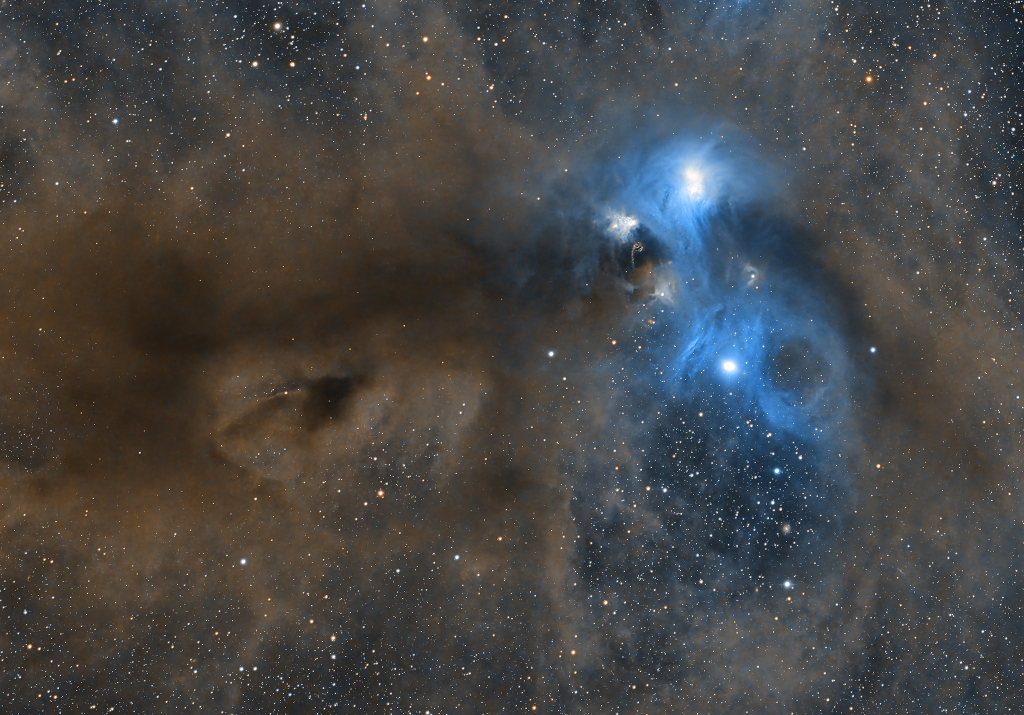Blog
Johnny Henry Smith II (June 25, 1922 – June 11, 2013) was an American cool jazz and mainstream jazz guitarist. He wrote “Walk, Don’t Run” in 1954. In 1984, Smith was inducted into the Alabama Jazz Hall of Fame.
more...The jellyfish galaxy JO206 trails across this image from the NASA/ESA Hubble Space Telescope, showcasing a colorful star-forming disk surrounded by a pale, luminous cloud of dust. A handful of foreground bright stars with crisscross diffraction spikes stands out against an inky black backdrop at the bottom of the image. JO206 lies over 700 million light-years from Earth in the constellation Aquarius.
Jellyfish galaxies are so-called because of their resemblance to their aquatic namesakes. In the bottom right of this image, long tendrils of bright star formation trail the disk of JO206, just as jellyfish trail tentacles behind them. The tendrils of jellyfish galaxies are formed by the interaction between galaxies and the intra-cluster medium, a tenuous superheated plasma that pervades galaxy clusters. As galaxies move through galaxy clusters, they ram into the intracluster medium, which strips gas from the galaxies and draws it into the long tendrils of star formation.
The tentacles of jellyfish galaxies give astronomers a unique opportunity to study star formation under extreme conditions, far from the influence of the galaxy’s main disk. Surprisingly, Hubble revealed that there are no striking differences between star formation in the disks of jellyfish galaxies and star formation in their tentacles, which suggests the environment of newly formed stars has only a minor influence on their formation.

Marvin “Smitty” Smith (born June 24, 1961) is an American jazz drummer and composer.
Marvin Smith was born in Waukegan, Illinois, where his father, Marvin Sr., was a drummer. “Smitty” was exposed to music at a young age, receiving formal musical training at the age of three.
After graduating from Waukegan East High School, Smith attended Berklee, graduating in 1981. Smith has recorded 200 albums with various artists, as well as two solo albums. He has toured with, a mong others, Sting, Dave Holland, Sonny Rollins, Willie Nelson and Steve Coleman. He is a former member of The New York Jazz Quartet, and was the drummer for the Tonight Show with Jay Leno band, led by Kevin Eubanks, from January 30, 1995until the show’s end on May 29, 2009. Smith was also the drummer for the Jay Leno Show band in 2009-10.
more...
Geoffrey Arnold Beck (24 June 1944 – 10 January 2023) was an English guitarist. He rose to prominence as a member of the rock band the Yardbirds, and afterwards founded and fronted the Jeff Beck Group and Beck, Bogert & Appice. In 1975, he switched to an instrumental style with focus on an innovative sound, and his releases spanned genres and styles ranging from blues rock, hard rock, jazz fusion and a blend of guitar-rock and electronica.
Beck was ranked in the top five of Rolling Stone and other magazines’ lists rankings of the greatest guitarists. He was often called a “guitarist’s guitarist”. Rolling Stone described him as “one of the most influential lead guitarists in rock”. Although he recorded two successful albums (in 1975 and 1976) as a solo act, Beck did not establish or maintain commercial success like that of his contemporaries and bandmates. He recorded with many artists.
Beck earned wide critical praise and received the Grammy Award for Best Rock Instrumental Performancesix times and Best Pop Instrumental Performance once. In 2014, he received the British Academy’s Ivor Novello Award for Outstanding Contribution to British Music. He was inducted into the Rock and Roll Hall of Fame twice: first as a member of the Yardbirds (1992) and secondly as a solo artist (2009).
more...Frank Lowe (June 24, 1943 – September 19, 2003) was an American avant-garde jazz saxophonist and composer.
Born and brought up in Memphis, Tennessee, Lowe took up the tenor saxophone at the age of 12. As an adult he moved to San Francisco, where he met Ornette Coleman. Coleman suggested Lowe visit to New York City, which Lowe did, and he began playing with Sun Ra and then Alice Coltrane, with whom he recorded in 1971. Unusually for the jazz culture at the time, Lowe had had no extended apprenticeship or slow paying-of-dues: one moment he was an amateur, and the next he was playing with the late John Coltrane’s rhythm section. With Alice Coltrane he recorded World Galaxy in 1971.
more...Terrence Mitchell “Terry” Riley (born June 24, 1935) is an American composer and performing musician best known as a pioneer of the minimalist school of composition. Influenced by jazz and Indian classical music, his music became notable for its innovative use of repetition, tape music techniques, and delay systems. His best known works are the 1964 composition In C and the 1969 LP A Rainbow in Curved Air, both considered landmarks of minimalism and important influences on experimental music, rock, and contemporary electronic music.
Raised in California, Riley began studying composition and performing solo piano in the 1950s. He befriended and collaborated with composer La Monte Young, and later became involved with both the San Francisco Tape Music Center and Young’s New York collective, the Theatre of Eternal Music. A three-record deal with CBS in the late 1960s brought his work to wider audiences. In 1970, he began intensive studies under Hindustani singer Pandit Pran Nath, whom he often accompanied in performance. He has collaborated frequently throughout his career, most extensively with chamber ensemble the Kronos Quartet and his son, guitarist Gyan Riley.
Born in Colfax, California, in 1935, Riley began performing as a solo pianist during the 1950s. During that decade, he studied composition at San Francisco State University, the San Francisco Conservatory, and University of California, Berkeley, studying with Seymour Shifrin and Robert Erickson. He befriended composer La Monte Young, whose earliest minimalist compositions using sustained tones were an influence; together, Young and Riley performed Riley’s improvisatory composition Concert for Two Pianists and Tape Recorders in 1959–60.
https://www.youtube.com/watch?v=DpYBhX0UH04
more...
Over 500,000 light years across, NGC 6872 (top right) is a truly enormous barred spiral galaxy, at least 5 times the size of our own very large Milky Way. The appearance of this giant galaxy’s distorted and stretched out spiral arms suggests the magnificent wings of a giant bird. Of course its popular moniker is the Condor galaxy. It lies about 200 million light-years distant toward the southern constellation Pavo, the Peacock. Lined with star-forming regions, the distorted spiral arms are due to NGC 6872’s gravitational interaction with the nearby smaller galaxy IC 4970, seen just above the giant galaxy’s core. The Pavo galaxy group’s dominant giant elliptical galaxy, NGC 6876 is below and left of the soaring Condor galaxy.

Kevin Edward Locke (Lakota name: Tȟokéya Inážiŋ, meaning “The First to Arise”; June 23, 1954 – September 30, 2022) was of Lakota descent of the Standing Rock Sioux Tribe and Anishinaabe of White Earth. He was a preeminent player of the Native American flute, a traditional storyteller, cultural ambassador, recording artist and educator. He was best-known for his hoop dance, The Hoop of Life.
Born on June 23, 1954, in Los Angeles, CA. At the age of five years Locke moved north with his family, later to settle in South Dakota on the Standing Rock Reservation in 1966. It was from his mother, Patricia Locke, his uncle Abraham End-of-Horn, mentor Joe Rock Boy, and many other elders and relatives that Kevin received training in the values, traditions and language of his native Sioux culture.
more...Sahib Shihab (born Edmund Gregory; June 23, 1925 – October 24, 1989) was an American jazz and hard bop saxophonist (baritone, alto, and soprano) and flautist. He variously worked with Luther Henderson, Thelonious Monk, Fletcher Henderson, Tadd Dameron, Dizzy Gillespie, Kenny Clarke, John Coltrane and Quincy Jones among others.
He was born in Savannah, Georgia, United States. Edmund Gregory first played alto saxophone professionally for Luther Henderson aged 13, and studied at the Boston Conservatory, and to perform with trumpeter Roy Eldridge. He played lead alto with Fletcher Henderson in the mid-1940s.
He was one of the first jazz musicians to convert to Islam and changed his name in 1947. He belonged to the Ahmadiyya sect of Islam.[5] During the late 1940s, Shihab played with Thelonious Monk, and on July 23, 1951 he recorded with Monk (later issued on the album Genius of Modern Music: Volume 2). During this period, he also appeared on recordings by Art Blakey, Kenny Dorham and Benny Golson. The invitation to play with Dizzy Gillespie‘s big band in the early 1950s was of particular significance, as it marked Shihab’s switch to baritone.
more...George Allen Russell (June 23, 1923 – July 27, 2009) was an American jazz pianist, composer, arranger and theorist. He is considered one of the first jazz musicians to contribute to general music theory with a theory of harmony based on jazz rather than European music, in his book Lydian Chromatic Concept of Tonal Organization (1953).
Russell was born in Cincinnati, Ohio, on June 23, 1923, to a white father and a black mother. He was adopted by a nurse and a chef on the B & O Railroad, Bessie and Joseph Russell. Young Russell sang in the choir of the African Methodist Episcopal Church and listened to the Kentucky Riverboat music of Fate Marable. He made his stage debut at age seven, singing “Moon Over Miami” with Fats Waller.
more...Milton John Hinton (June 23, 1910 – December 19, 2000) was an American double bassist and photographer.
Regarded as the Dean of American jazz bass players, his nicknames included “Sporty” from his years in Chicago, “Fump” from his time on the road with Cab Calloway, and “The Judge” from the 1950s and beyond. Hinton’s recording career lasted over 60 years, mostly in jazz but also with a variety of other genres as a prolific session musician.
He was also a photographer of note, praised for documenting American jazz during the 20th Century.
Hinton was born in Vicksburg, Mississippi, United States, the only child of Hilda Gertrude Robinson, whom he referred to as “Titter,” and Milton Dixon Hinton. He was three-months-old when his father left the family. He grew up in a home with his mother, his maternal grandmother (a former slave of Joe Davis, the brother of Jefferson Davis), and two of his mother’s sisters.
more...The martinete is one of the main ‘cantes’ (songs) of flamenco and is considered a form of toná. Although its origin is uncertain, most researchers place it in the forges of Jerez, Cádiz and Triana (Seville), places where the Andalusian gypsies used to work, who began to develop these songs.
Considered a modality of the toná, the martinete is interpreted without guitar, ‘a palo seco’, although sometimes it is accompanied by the sounds that are reminiscent of those of a forge, hitting some metal.
In fact, the name of this song refers to the hammer with which the blacksmiths or the twin bellows used in the forges that are called hammers worked.
It is a song with a couplet, of four verses of eight syllables. His lyrics are characterized by having a sad content and a monochrome tone. It begins with an om ‘tran-tran’onomatopoeic, which recalls the sound of the hammer on the anvil, and ends with long ‘quejío’.
The martinete, together with the soleá, seguiriya or tonás, are considered “cantes grandes” of flamenco and styles that support the tree of this artistic genre.
more...Cosmic dust clouds cross a rich field of stars in this telescopic vista near the northern boundary of Corona Australis, the Southern Crown. Part of a sprawling molecular cloud complex this star forming region is a mere 500 light-years away. That’s about one third the distance of the more famous stellar nursery known as the Orion Nebula. The 2 degree wide frame would span 15 light-years at the clouds’ estimated distance. Mixed with bright nebulosities the dust clouds effectively block light from more distant background stars in the Milky Way and obscure from view embedded stars still in the process of formation. Large dark nebula Bernes 157 is on the left. To its right are a group of pretty reflection nebulae cataloged as NGC 6726, 6727, 6729, and IC 4812. Their characteristic blue color is produced as light from hot stars is reflected by the cosmic dust. The more compact NGC 6729 surrounds young variable star R Coronae Australis. Just below it, filamentary arcs and loops are identified as Herbig Haro objects associated with energetic newborn stars. In fact, at the heart of this area lies the Coronet Cluster, one of the nearest and most active star forming regions.

More Posts
- The Cosmos with E0102
- Oscar Brashear Day
- Enoch Light Day
- World Music with Fela Kuti
- Daily Roots with Scientist
- The Cosmos with RCW 38
- Luther Allison Day
- Duke Pearson Day
- Ike Quebec Day
- World Music with Paco de Lucia
- Daily Roots with the Skatalites
- Aretha Franklin Passes at 76
- The Cosmos with IC 5201
- Bill Evans Day
- Mal Waldron Day
- Carl Perkins Day
- World Music with Australian Aboriginal Didgeridoo
- Daily Roots with Mystic Eyes
- The Cosmos with IRAS 16399-0937
- Joe Castro Day